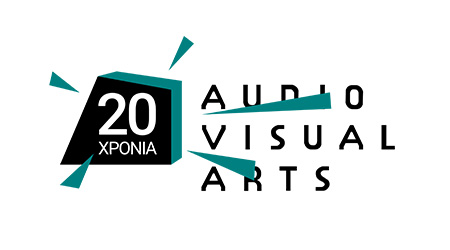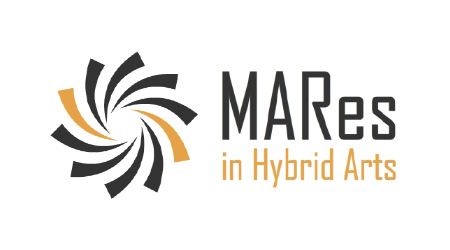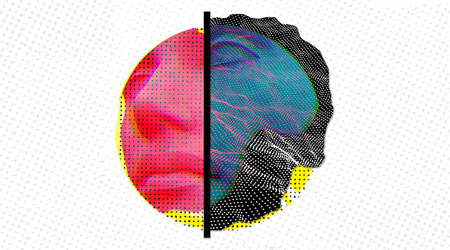FULL THESIS REGULATION
Version 2.4 10/04/2012 - wv7.0, Last updated 10/04/2012 (.pdf -256K)
Introduction
Writing an undergraduate thesis offers students the opportunity to use the knowledge they have acquired during their studies, to evolve their personal skills and to work on applications associated with their field of interest and their future career path. The Undergraduate Thesis (UT) is considered essential for the consolidation of the scientific knowledge acquired by each student, therefore it is mandatory for the completion of a degree.
A. Definitions
1. A three-member Undergraduate Theses Committee is appointed by the Temporary General Assembly of the Department, consisted of Teaching Staff. The duties of the Committee are to evaluate issues and suggest solutions concerning the development of undergraduate theses to the Temporary General Assembly.
2.The subject of a UT concerns fields of study that cultivate and enhance the audiovisual creation and expression through the use of new technological tools in the wider professional audiovisual world of Art, Education, Entertainment and Mass Communication, such as audio and audiovisual production institutions (e.g. radio, television, advertising agencies), audiovisual systems development institutions (e.g. educational/entertainment applications), cultural heritage management organizations (e.g. museums, galleries, private collections) and public and private educational institutions. The combination of theoretical research and experimental application of ideas through the use of new technologies is suggested.
A typical thesis work can be one of the following or a combination of the following:
− creation of an audio or audiovisual artwork.
− development or application of a contemporary technology or management methods (production, editing, filing, promotion, preservation) of audio and image.
− an interdisciplinary theoretical research.
3. Two semesters are required for the completion of a UT (30 ECTS), i.e. at least 750 hours working load.
4. The student works on his/her UT under the supervision of a professor of the Department (Supervisor) and/ or other professors in the case of a cooperation (Advisors).
Entitled to the right to become a supervisor are:
− the members of the Teaching Staff
− the adjunct professors
− the members of the Laboratory Teaching Staff
Able to cooperate as advisors are:
− transferred teachers of Secondary Education
− professors of another university (in Greece or abroad), as well as acclaimed professional audiovisual artists.
5. Every professor can be appointed supervisor for a specific number of UTs that is defined every semester by dividing the number of the professors with the number of students that have gained the required ECTS (rounded to the next integral number). In the case that several students are interested in being supervised by a specific professor, the selection criteria taken into consideration (indicatively) are the student’s academic performance with emphasis on courses directly associated with the subject of the UT, as well as the curriculum vitae that should be attached to the student’s portfolio. The Supervisor agrees to supervise a UT by signing and submitting the Declaration of Acceptance of the UT Supervision to the registrar of the Department, where he/she can also mention the names of the advisors, if any.
6. The students that have acquired at least 210 ECTS at the end of the exam period in February or 230 ECTS at the end of the exam period in September can file a petition to the registrar for a Undergraduate Thesis Proposal until six weeks after the end of the exam period in February or in September. The UT Proposal is signed by the student and its size is approximately 1,000 words. It includes:
I. an indicative title,
II. an abstract,
III. a brief critical analysis of the field that concerns the subject,
IV. suggested methodology,
V. indicative deliverables,
VI. a suggestive bibliography
Note 1: The UT Proposal must be completed and submitted within a month. Therefore, the preparation period should start sufficiently early.
Note 2: Guidelines for the form and structure of the proposal can be found on the Department’s website (https://ionio.gr/depts/avarts3/el/studies/essays-guidelines)
With the completion of the UT the students files to the registrar of the Department a petition to the Temporary General Assembly in order to appoint a three-member Undergraduate Thesis Examination Board. Prerequisite for the petition is that the student has acquired 280 ECTS minus the ECTS gained by the UT.
President of the Undergraduate Thesis Examination Board is the Supervisor of the UT, who selects two of the Department’s professors to be the other members of the Board and makes a proposal to the TGA. At least one member of the Board must be a member of the Department’s Teaching Staff.
Furthermore, the monographs, the research files and the digital copies of the UT are submitted to the Archives Office by the student in three copies (one for each member of the Undergraduate Thesis Examination Board). The submission is registered to the Archives Office’s protocol. The Department’s Archive Office is accessible only for the registrars of the Departments.
Copies of the UTs that were successfully presented are submitted and registered to the Undergraduate Thesis Protocol and kept in the Archives Office of the Department which is housed at the Office of the Secretary of the Department.
B. Procedure
1. The student suggests a subject for his/her thesis to a professor of the Department who he/she wishes to be his/her Supervisor.
2. The Professor evaluates the student’s proposal, basing his/her judgment mainly on the relevance between the UT’s subject and the scientific field covered by the Department, as well as on its clarity, its level of completion and the scientific quality of the proposal. Later, in the case that the professor agrees to be appointed as a supervisor of the specific UT, he/she submits the printed Supervision Declaration to the Registrar and cooperates with the student and helps him/her to complete the UT Proposal.
3. The student submits the UT Proposal along with an application (in four copies and in electronic form) to the Office of the Secretary of the Department until four (4) weeks before the end of the exam period in February and in September. Note: The student bears the whole responsibility for the content of the Proposal.
4. The Office of the Secretary of the Department verifies if the student meets the typical requirements for conducting a UT and, if so, sends the UT Proposal to the members of the TGA, which integrates among others the members of the Undergraduate Thesis Committee.
5. The UT Committee examines the Proposal giving emphasis on:
a) the relevance between the UT’s subject and the scientific field covered by the Department
b) the described content structure, so as to reassure that the UT corresponds to the required academic level.
c) the expected workload for its completion by the student that amounts to 750 hours (the preparation time for the Proposal of the UT is included), as well as the suggested schedule.
Lastly, the UT Committee comments and proposes corrections, if any, and proposes to the TGA.
6. The TGA decides for the approval (with or without conditions) or the rejection of the UT within 2 months since the end of the exam period (February or September). In every case the TGA justifies its proposal. Along with the approval of the UT Proposal the TGA sets the starting date of writing of the UT that coincides with the first day of the semester. If the UT Proposal is rejected the TGA can suggest a new submission within 10 days (in the event that the TGA’s comments have been taken into consideration).
7. The Office of the Secretary of the Department sends the justification of the approval (with or without conditions) or the rejection of the UT to the supervisor via email. The supervisor is responsible for informing the student.
8. In case special equipment is required for the completion of the UT, the Department can lend part of its available equipment, under the condition that this concession will not disturb any academic and research activities of the Department.
9. For the optimal development of the UT it is recommended that the student meets regularly with the Supervisor. Moreover, during the examination period preceding the final submission of the Undergraduate Thesis, it is suggested that the student submits to the professor a written progress report, i.e. a further developed text of the initial UT Proposal.
10. During the elaboration of the UT, both the supervisor and the student can unilaterally apply for the cooperation ceasure at the Office of the Secretary of the Department, referring in written to the reasons leading to this decision. According to each case, the Undergraduate Theses Committee proposes the next actions.
11. When the Supervisor considers that the scope of the UT is fulfilled, the student is prompted to follow with the submission of the UT for examination. The student submits an application to the Office of the Secretary of the Department for the appointment of a three-member Undergraduate Thesis Examination Board not later than three (3) weeks before the end of the examination period (in February, June or September). The monographs, the research files and any digital copies are submitted to the Archives Office of the Department in three copies (one for each member of the three-member Undergraduate Thesis Examination Board), whereas the artworks, if any, are placed in a space determined with the advice of the President of the Department.
12. A copy of the initial UT proposal that was submitted to the Registrar and approved according to the procedure described above shall be attached to every copy as an annex. Any deviation from the initial content of the proposal must be justified in the UT.
13. The Supervisor suggests to the TGA two names from the teaching staff in order to form the three-members’ UT Examination Board. The TGA decides and appoints the constitution of the UT Examination Board having as a criterion the fulfillment of the theoretical, artistic and technological aspects of the Department.
14. The presentation of the UT is mandatory and it is open to the public. It takes place on the date and time announced by the Office of the Secretary of the Department at least one week before. The duration of the presentation should not exceed 30 minutes. The presentation is followed by discussion during which the members of the UT Examination Board pose questions, so as to justify that the subject is thoroughly examined.
15. After the presentation, the three-member UT Examination Board meet in order to grade the UT. The evaluation results form, once signed by the members of the UT Examination Board, is submitted by the Supervisor to the Office of the Secretary of the Department within 10 days after the end of the exam period. The final grade is the average of the three grades.
16. In the event that the UT Examination Board:
a) considers that the UT acquired the minimum pass grade or was above the minimum pass grade, but suggests some corrections: the Student must submit the UT anew, having taken into consideration the corrections. Only then the Supervisor submits the grade form to the Secretary.
b) considers that the UT is deficient but (below minimum pass grade) yet has the potential to be successfully developed: doesn’t submit the grade, but requires that the student analyzes further, submits and presents the UT until the next exam period and in accordance with Paragraph 11.
c) considers for the second time that the UT is deficient (below minimum pass grade): submits the grade and the Student must write a new Thesis, repeating the whole process.
17. The UT, which must be 15,000 to 17,000 words (suggested size – 300-350 words per page), as well as the research files and any digital copies are signed by the UT Examination Board and are submitted by the student to the Archives Office, where they are registered to the UT Protocol.
C. Intellectual Property Issues
1. The UT is the result of the work of more than one person. It is the product of direct collaboration and cooperation between Student and Supervisor, as well as eventual Advisors, who, according to the subject, participate in the developing of the UT. Since the beginning of the process the student acts under the coordination, with the intellectual direction and guidance, of the Supervisor, whereas he / she has access to the necessary equipment and technical infrastructure (if available) of the Department of Audio and Visual Arts. Hence, the student developing an UT at the Department of Audio and Visual Arts retain a copyright share in the thesis. Both Supervisor, Advisors and Department of Audio and Visual Arts retain the remaining copyright shares in the UT .
2. Rights – Concession
A) The student must state in the text of the UT that the Department of Audio and Visual Arts may use the results of the thesis for academic, research, educational, communications policy purposes, as well as for the promotion of the Department of Audio and Visual Arts, for current events and knowledge update and generally for nonprofit purposes.
B) The student’s individual artistic contribution to the UT is a result of original creative thinking. The student must declare in the text of the UT that no third party has any right or claim on the UT (except from the ones mentioned in Paragraph C.1 of the regulation herein) and that he / she has specified without any deviation the name and the origin of the sources that he / she used for the UT.
C) The Student must declare in the text of the UT that he / she consents the UT to be available in any form (in printed / digital form) at the Library Department of Audio and Visual Arts and at the Ionian University Library for research, academic and educational purposes.
D) The Student may present the scientific result of the UT in symposia, journals, conferences, exhibitions, festivals, etc., but must expressly declare that he / she developed the thesis at the Department of Audio and Visual Arts and mention the Supervisor and the Advisors that participated in the process.
ANNEX A
Guidelines for the writing of Undergraduate Theses
A. Presentation Format
The Undergraduate thesis is submitted in printed form, in paper size A4. The suggested fonts are Times or Times New Roman in 12 points size and the line spacing should be 1,5. The size of the Undergraduate thesis ranges between 15.000 and 17.000 words (300-350 words per page). Regarding the rest of the text features (titles, subtitles, images, etc.), the Student may follow the sample provided in the course “Research Methodology”.
The written part of the UT is submitted thermal bound and printed on A4 paper with 65-70 characters per line, line spacing 1,5 and margins 2,5 cm (up, down, right, left)
The following must be written on the cover page and on the first page of the UT:
1. Department of Audio and Visual Arts, Ionian University
2. [ Title of the UT]
3. [ Student’s name]
4. [ Name and Signature of the Supervisor and Advisors, if any]
5. Corfu, [ month, year]
The text of the UT and the supporting documentation (software, pictures of installations / structures, etc.) are submitted in printed and digital form (CD, DVD), as a draft (e.g. word document, latex files) and in its final form (pdf, ps). The software that was developed is submitt ed in source code in the UT’s annex.
The student may use digital means (i.e. PowerPoint or a similar program) for the final presentation of the UT to the Examination Board and submit the presentation of the UT to the Office of the Secretary of the Department in digital form (ppt).
B. Structure
The text of the UT, irrespective of its subject, may include the following:
I. Undergraduate Thesis
[ Student’s Name]Department of Audio and Visual Arts II. Abstract in Greek and in English III. Summary (one paragraph per chapter) IV. Table of contents (page number of every chapter, subchapter, annexes, etc.) V. Contents (every chapter (1,2,3…) & Annexes (A, B, C,…)
- Introduction (introduction to the subject of the UT)
- Development ( analysis, synthesis, application-construction, documentation)
- Conclusion
- Bibliography
- Annexes (A, B, C,…)
More precisely the Undergraduate thesis consists of the following parts:
● Title
The title must be short and express with clarity the precise subject of the UT.
● Abstract
In this part the content of the UT is briefly described (approx. 100 words).
● Summary
The content of the UT is described (one paragraph per chapter) with emphasis on the results (approx. 500 words).
● Table of Contents
It includes all the titles – subtitles, paragraphs, etc. of the chapters (from the introduction to the bibliography and the annexes) and the corresponding page numbers.
● Introduction
The introduction is the first Chapter (CHAPTER 1:) of the UT. It aims to introduce the main subject of the UT to the reader. It includes the following:o Research/ Application FieldThe knowledge domain of the UT’s subject is described(referring to the work of other scientists / artists).o UT’s aimThe aim of the UT is described (with a critical analysis on the research / application field).o DefinitionsThe definitions and explanations of the concepts on which the UT is based.o MethodologyThe methodology principles of the UT are described, mentioning which method, tools, case study/ies and experiments are used in every part. The general principles that will be developed in detail in the main part are described here. A brief reference to the rest of the chapters can be made, in order to help the reader understand the argumentation of the UT.● Main Part (Development)The development may include as many chapters as required in order to describe thoroughly the subject of the UT and the research stages. The problems that arise during the UT’s development are analyzed in various parts. Every chapter focuses mainly on a point, a subject, a process, a complete argument, an experiment or a case study, etc.● ConclusionThe conclusion of the UT is an outcome of any results obtained in each chapter and includes an evaluation of whether the goals of the UT were reached. Moreover, any deviations from the initial UT proposal, which was approved during the initial phase of submission, are analyzed and documented.● Suggestions for further DevelopmentThis is the last chapter of the UT, where an additional development- research is suggested, which will support the in depth completion of the UT’s subject in the future.● BibliographyAn internationally accepted bibliographic standard must be followed. The use of Chicago Manual of Style is suggested. This style sheet has many editions, among which the Chicago Manual of Style 15th B which is simple, distinct and handy and used in most of the MIT Press publications.
You can find the manual of style here:
http://library.williams.edu/citing/styles/chicago2.php
http://www.calstatela.edu/library/guides/3chicago.pdf
● Annexes
Every annex (ANNEX A:) includes the extensive documentation of the UT, such as code, video, pictures, experiment results, etc.
C. Characteristics of a Scientific Text
● Brevity (concise expression)
Avoid redundant expressions-sentences. A simple way to distinct a redundant phrase is to question firstly whether this phrase provides a specific information and secondly if this information can be documented with comment s, examples or an argumentation.
● Clarity
The syntactical structure of the sentences must be as simple as possible. The sentences must be short. Avoid the subordinate clauses, if possible. Giving examples that specify and describe general suggestions or abstract concepts help the reader to understand them.
● Precision
Avoid abstract expressions-phrases. Try using more specific terms.
● Logical Argumentation
Every conclusion of the UT is based on an argumentation that describes its structure and the logical process followed.
● Adequate Documentation
The points presented in the text must be documented with bibliographic references or with examples and specific information. Every reference is made directly to each the referring point (mostly at the end of the sentence) and refers to the bibliography at the end of the UT.
D. Useful Internet Sites
The following websites provide useful information about the writing of a Undergraduate thesis. The list also includes websites concerning the development of Ph.D dissertations, because they provide general information considered useful for the writing of any scientific paper.
Undergraduate Theses and Scientific Papers
http://utopia.duth.gr/~soikonom/MANUAL_GIA_six (6) weeksPTYXIAKH.pdf
http://web.mit.edu/writing/index.html
http://libraries.mit.edu/tutorials/general/index.html
http://web.mit.edu/wac/writing/weblinks.html
http://owl.english.purdue.edu/owl/
http://owl.english.purdue.edu/workshops/hypertext/ResearchW/index.html
http://owl.english.purdue.edu/internet/owls/writing-labs.html
http://owl.english.purdue.edu/owl/resource/545/01/
http://www.mhhe.com/mayfieldpub/tsw/home.htm
www.ai.uga.edu/mc/howtowrite/howtowrite.pdf
http://www.aresearchguide.com/1steps.html
http://www.unc.edu/depts/wcweb/handouts/thesis.html
http://www.charleslipson.com/How-to-write-a-thesis.htm
http://www.ma-dissertations.com/blog/writing-a-dissertation/how-to-write-a-thesis-statement-%E2%80%93-basic-things-that-you-need-to-know/432
http://www.ldeo.columbia.edu/~martins/sen_sem/thesis_org.html
Dissertations
http://www.phys.unsw.edu.au/~jw/thesis.html#outline
http://www.learnerassociates.net/dissthes/
http://www.amazon.com/Authoring-PhD-Thesis-Doctoral-Dissertation/dp/1403905843
http://www.amazon.co.uk/Your-PHd-Thesis-Revise-Studymates/dp/1842850709
http://www.cs.toronto.edu/~sme/presentations/thesiswriting.pdf
E. Bibliography
Strunk, William, E. B. White, and Maira Kalman. 2007. The elements of style. New York: Penguin Press.
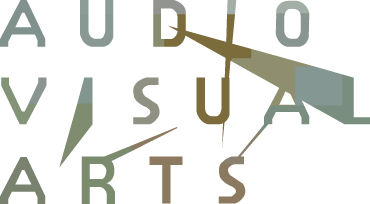

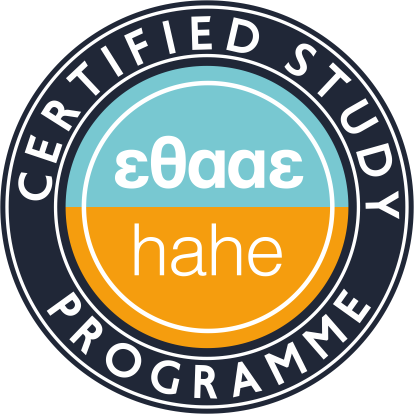

 MathSciNet info
MathSciNet info